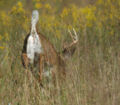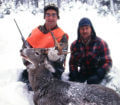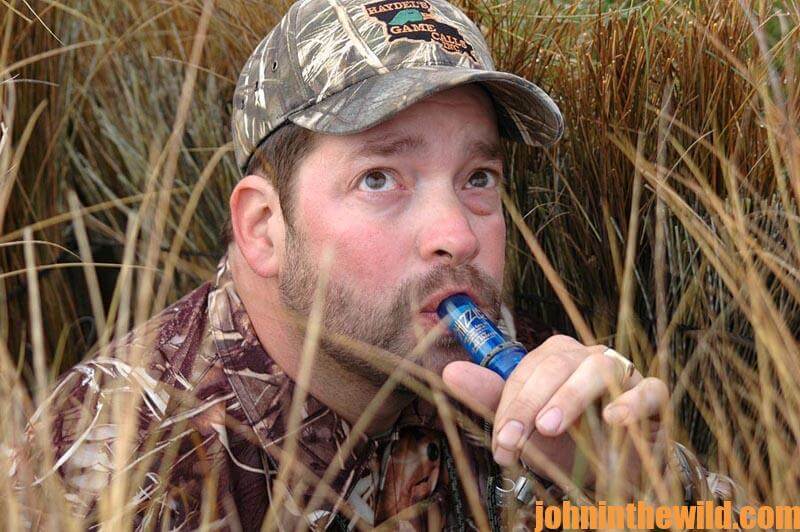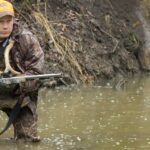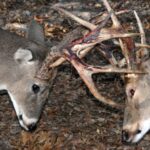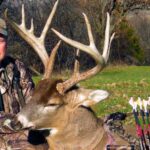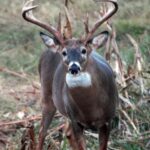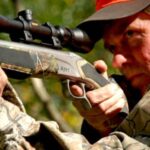John’s Note: Often deer hunters don’t consider rattling in the early season for deer. But some nationally-known hunters use a combination of rattling and grunting to bring deer to them in the early season.
Rod Haydel:
 Rod Haydel, the president of Haydel’s Game Calls (www.haydels.com) in Bossier City, Louisiana, is a veteran deer caller and a master woodsman, who says, “During the rut, bucks produce numbers of sounds. They’re angry at the world until they find an estrous doe to breed, and they’ll fight with anything or anybody. One of the most-effective ways to call deer during the rut is to start off with some light grunting and use antlers to rake bushes and brush like a buck fighting a tree. This sound often will call in more deer than aggressive antler crashing will. If another buck is in the area, he’ll usually come in to see what’s beating up on his bushes. If after a few minutes of calling like this a buck doesn’t come in, then I’ll begin to crash antlers together and become more aggressive with my grunt call.
Rod Haydel, the president of Haydel’s Game Calls (www.haydels.com) in Bossier City, Louisiana, is a veteran deer caller and a master woodsman, who says, “During the rut, bucks produce numbers of sounds. They’re angry at the world until they find an estrous doe to breed, and they’ll fight with anything or anybody. One of the most-effective ways to call deer during the rut is to start off with some light grunting and use antlers to rake bushes and brush like a buck fighting a tree. This sound often will call in more deer than aggressive antler crashing will. If another buck is in the area, he’ll usually come in to see what’s beating up on his bushes. If after a few minutes of calling like this a buck doesn’t come in, then I’ll begin to crash antlers together and become more aggressive with my grunt call.
“I’ve learned that using my Variable Tone Grunt Call to sound like two different deer makes rattling and grunting during the rut sound more realistic. The Variable Tone has a hole in it. By covering the hole with my finger, the call produces a deep-pitched grunt. Removing my finger from the hole allows the same call to make a higher-pitched grunt. Using this type of call, the grunts actually sound like two different bucks, which I think is more realistic when you’re trying to imitate two bucks fighting. I prefer to make short grunts instead of long, drawn-out grunts. At the end of my rattling-and-grunting sequence, I like to give one, low, long grunt to sound like a buck that’s been wounded in battle.
“Remember though, grunting and rattling won’t bring in bucks every day, even during the rut. One day you may go out and call in five bucks in the morning, and the next five times you rattle and grunt, you may not see a buck. But I do believe that especially during the rut, the hunter who uses rattling antlers and a grunt call will call in more bucks than a hunter who doesn’t.”
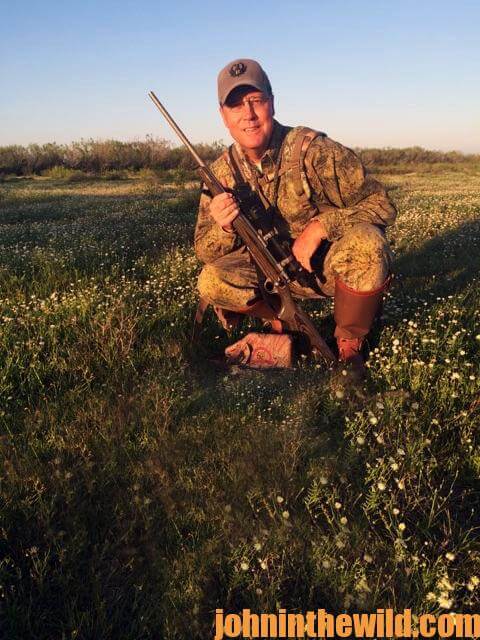 Burnham Brothers’ Gary Roberson:
Burnham Brothers’ Gary Roberson:
Gary Roberson of Menard, Texas, the owner of Burnham Brothers (www.burnhambrothers.com), has found deer difficult to call right after the peak of the rut in his area. “The rut’s very stressful on deer. But after they’ve had a resting period, rattling and grunting can be deadly effective in calling bucks. From watching and filming deer, I’ve learned bucks always come in downwind of the calling. Even if a buck comes busting out of thick cover in front of you when you rattle, he will circle downwind before he comes within that 20-30 yard range a bowhunter needs to take a shot. Effective rattling for the bowhunter is a team sport. If I’m rattling, I want my bowhunter to be about 30-yards below and downwind of me. Then when the deer does come in, he will be within the archer’s range but never see the shooter. That buck will be looking for the fight and searching for the place from where the rattling is coming.
“A deer that comes in downwind of you has a good chance of smelling you. I try and keep my clothes and my body as clean as possible. I use a cedar scent to attempt to cover my human odor. I also use the hocks of a buck that I’ll get from a deer-processing plant. Usually during the post-rut, the tuft of hair on the inside of the deer’s legs that he urinates on will smell very strong. Since I’m imitating a buck fight by rattling and grunting, I want to use real deer odor to make the buck that’s coming in think another buck is in his territory. You must mask your odor and have a buck odor instead. Then if the deer comes in downwind of you, you won’t spook him.
 “The rattling sequence I use is a very loud and hard crashing of the antlers together. If the deer can’t hear the antlers, he won’t come to them. But by popping the antlers hard together, I’ve seen deer come from 3/4-mile away straight to the sound. I’ve also watched what happens when I stop rattling. The deer quit coming. I think as long as a buck can hear the antlers and the grunt call, he’ll continue to come in to those sounds. To bag more and bigger bucks by rattling and calling in the post-rut, use cover scents and buddy hunt.”
“The rattling sequence I use is a very loud and hard crashing of the antlers together. If the deer can’t hear the antlers, he won’t come to them. But by popping the antlers hard together, I’ve seen deer come from 3/4-mile away straight to the sound. I’ve also watched what happens when I stop rattling. The deer quit coming. I think as long as a buck can hear the antlers and the grunt call, he’ll continue to come in to those sounds. To bag more and bigger bucks by rattling and calling in the post-rut, use cover scents and buddy hunt.”
To get John E. Phillips’ eBooks and print books on hunting deer, including his newest deer-hunting book, “Whitetail Deer and the Hunters Who Take Big Bucks,” available at http://amzn.to/2bYwYOK/, click on these books to learn more, “How to Hunt and Take Big Buck Deer on Small Properties,” “How to Hunt Deer Up Close: With Bows, Rifles, Muzzleloaders and Crossbows,” “PhD Whitetails: How to Hunt and Take the Smartest Deer on Any Property,” “How to Take Monster Bucks,” “How to Hunt Deer Like a Pro,” and “Bowhunting Deer: Mossy Oak Pros Know Bucks and Bows,” or to prepare venison, “Deer & Fixings.” Or, go to www.amazon.com/kindle-ebooks, type in the name of the book, and download it to your Kindle, and/or download a Kindle app for your iPad, SmartPhone or computer. You also can find John’s books on Nook at www.barnesandnoble.com.
For free information on making jerky from your deer to provide a protein-rich snack, you can download a free book from https://johninthewild.com/free-books.

